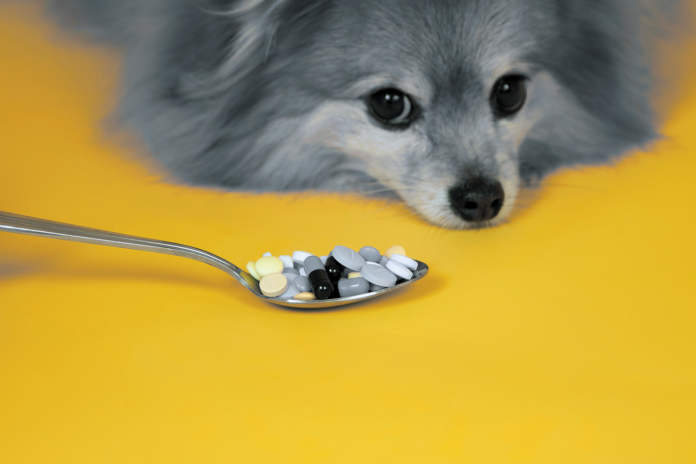Your dog is prescribed the pain-relieving medicine gabapentin — a drug also commonly prescribed for people. Because it’s cheaper from a pharmacy for people than from the vet, you decide to have the prescription filled at your local drug store. Going to your regular pharmacy is also more convenient. It’s right inside the supermarket.
The pharmacy prepares the medicine in liquid form, as prescribed, and compounds it with a sweetener to make your pet more amenable to taking it. But your dog only seems to get sicker. She keeps having diarrhea, occasional vomiting, overall lethargy, and even low blood sugar. Why?
It turns out the sweetener used by the pharmacist is xylitol, which is toxic to dogs and can also cause seizures, liver failure, and, eventually, death.
Avoiding dangerous mishaps
Veterinarians generally cannot compete with the pricing offered by pharmacies for people. They can’t store the same volume of a drug as, say, a Walgreens or CVS, so they can’t buy in the kind of volume that would keep down the cost. There are also other costs of running a pharmacy that are much less expensive for a large chain than a small veterinary office.
For that reason, veterinarians are happy to write a prescription for a drug if it enables you to take it somewhere else for a cheaper price. (Some drugs are approved only for veterinary use and will not be available at drug stores for people.) But before you hand over a prescription to a pharmacy for people or order a drug online, keep the following tips in mind for your dog’s safety.
Make sure a drug that is compounded for people doesn’t contain substances that are dangerous for your dog. Ask the pharmacist what substances are used to compound the medication, and then run those ingredients by your veterinarian. Communication is key here. Be clear with the pharmacist that the medication is for a dog, and don’t be afraid to go back and forth between the pharmacy and your vet before placing the order. It’s also never a bad idea for the pharmacist and the veterinarian to communicate directly so nothing gets lost in translation. Medicines for animals often make up only a small part of the prescriptions pharmacies fill, so they may not be aware of contraindications for certain ingredients.
Consider drug storage and chain-of-custody issues. Some active ingredients are deactivated by heat and light, and certain online pharmacies in particular may not be careful enough with their chain of custody to ensure that a drug retains its potency for your pet. Heartworm and flea and tick preventatives are perfect examples of what could go wrong. Their active ingredients lose efficacy when exposed to heat and light. How long did the drug sit on a truck in hot weather before arriving at your house? How long did it sit outside your door? You’ll need to make a judgment call about whether to go the online route after speaking with your dog’s doctor about storage vulnerabilities.
No substitutions, please. Never accept drug substitutions. It’s like playing Russian roulette. For instance, certain NSAIDS (non-steroidal anti-inflammatory drugs) are fine for reducing a dog’s pain, while others might cause adverse reactions. Substitutions could also cause problems with other drugs your dog might be taking at the same time. Such combinations might be fine for people but not for dogs, and a pharmacist who mostly traffics in drugs for people won’t necessarily know that. A case in point: NSAIDS and steroids. They do not mix in dogs and can be dangerous when administered concurrently.
Will you always pay less for your dog’s drugs at a human pharmacy? Prices can actually be all over the place.
In one veterinary hospital’s online pharmacy that we checked, 30 tablets of the pain reliever tramadol in 50-milligram doses cost $26.69. At CVS, they cost only $17.34. But at another online veterinary pharmacy, they came in lower than at CVS: $14.10. And prices change all the time. You have to keep checking.
Many companies, like Costco, have prescription memberships that can reduce prices considerably for generic versions of drugs. Just make sure that if your vet prescribes a certain drug, substituting the generic version is safe for your pet.





